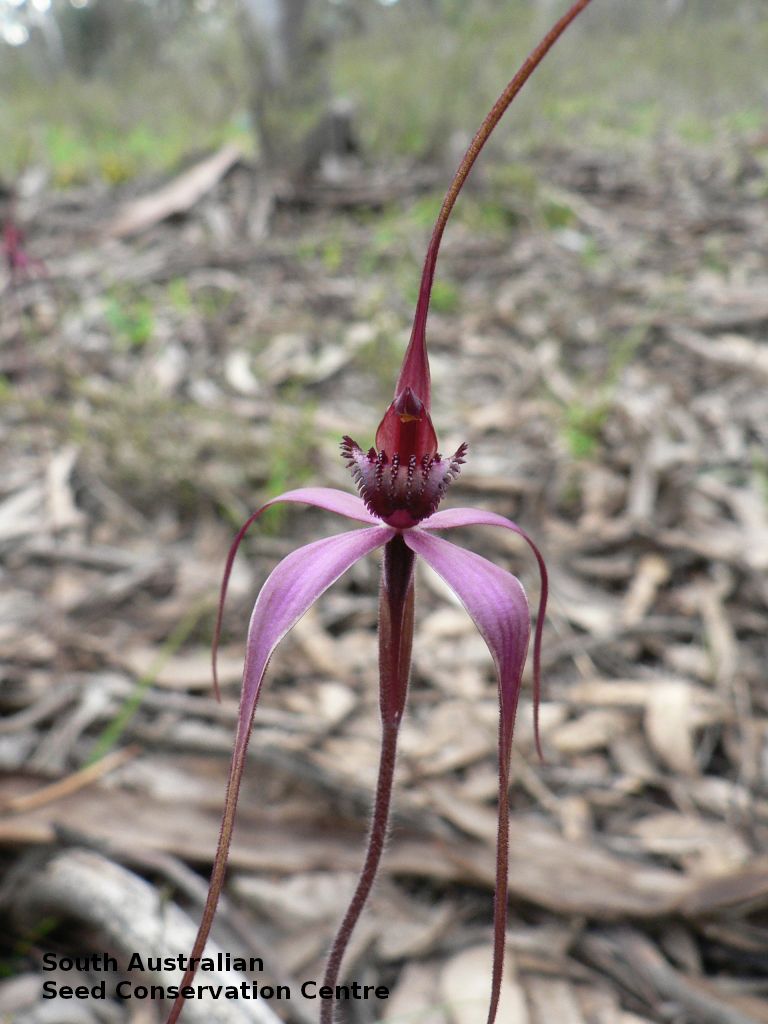
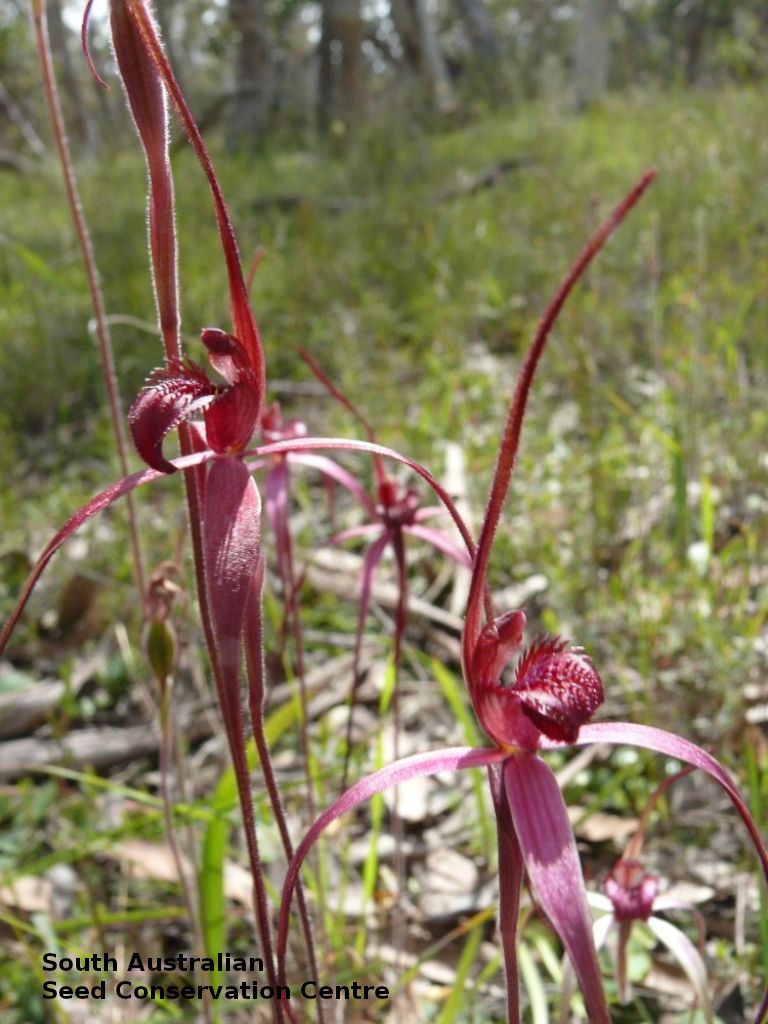
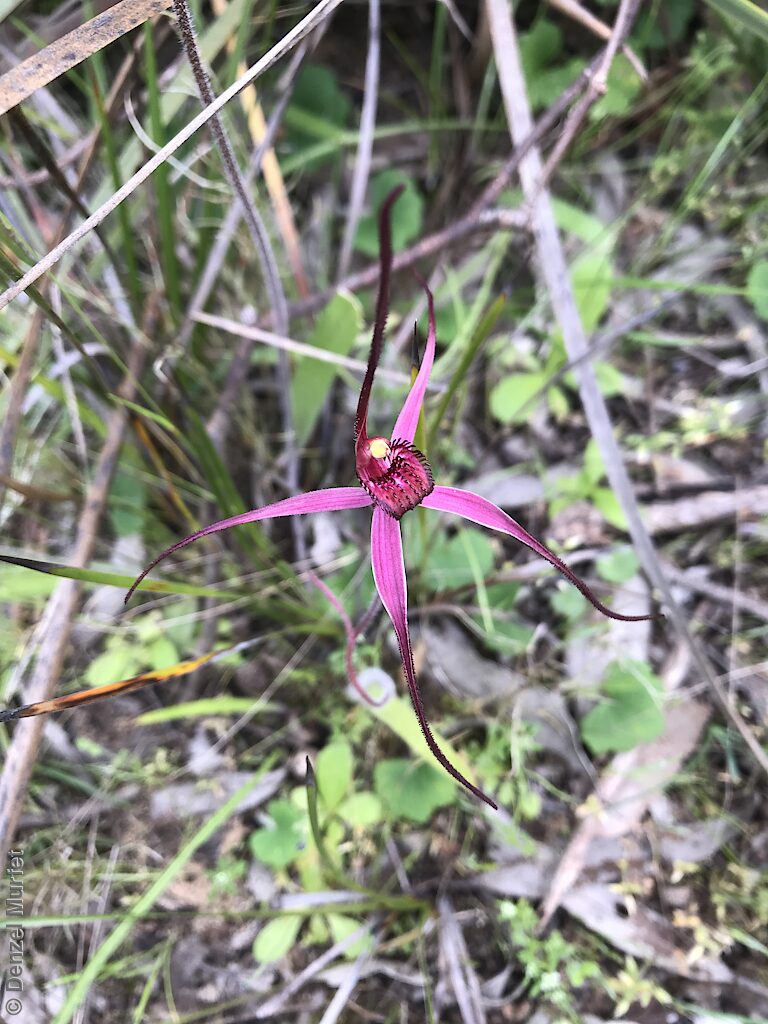
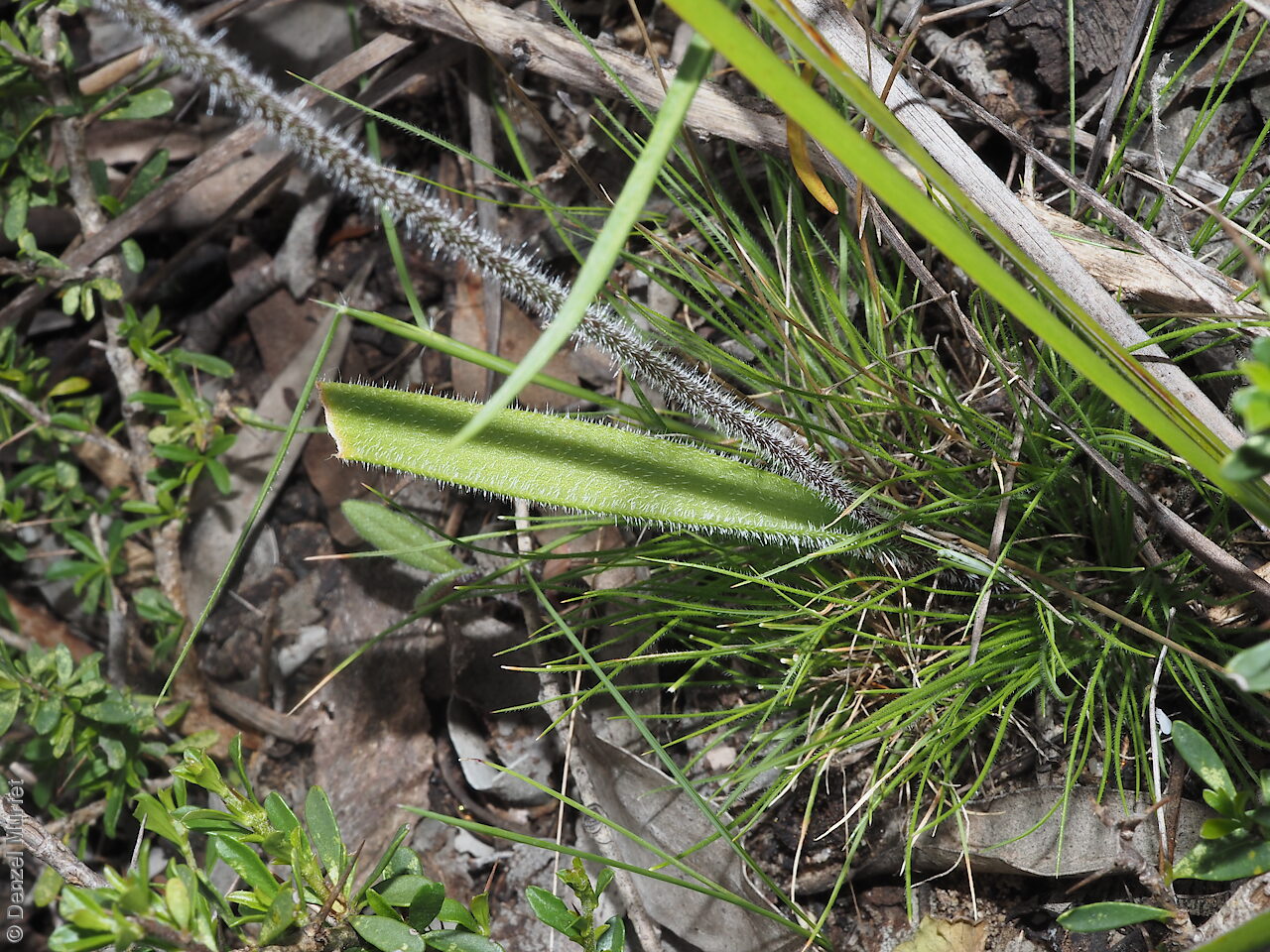
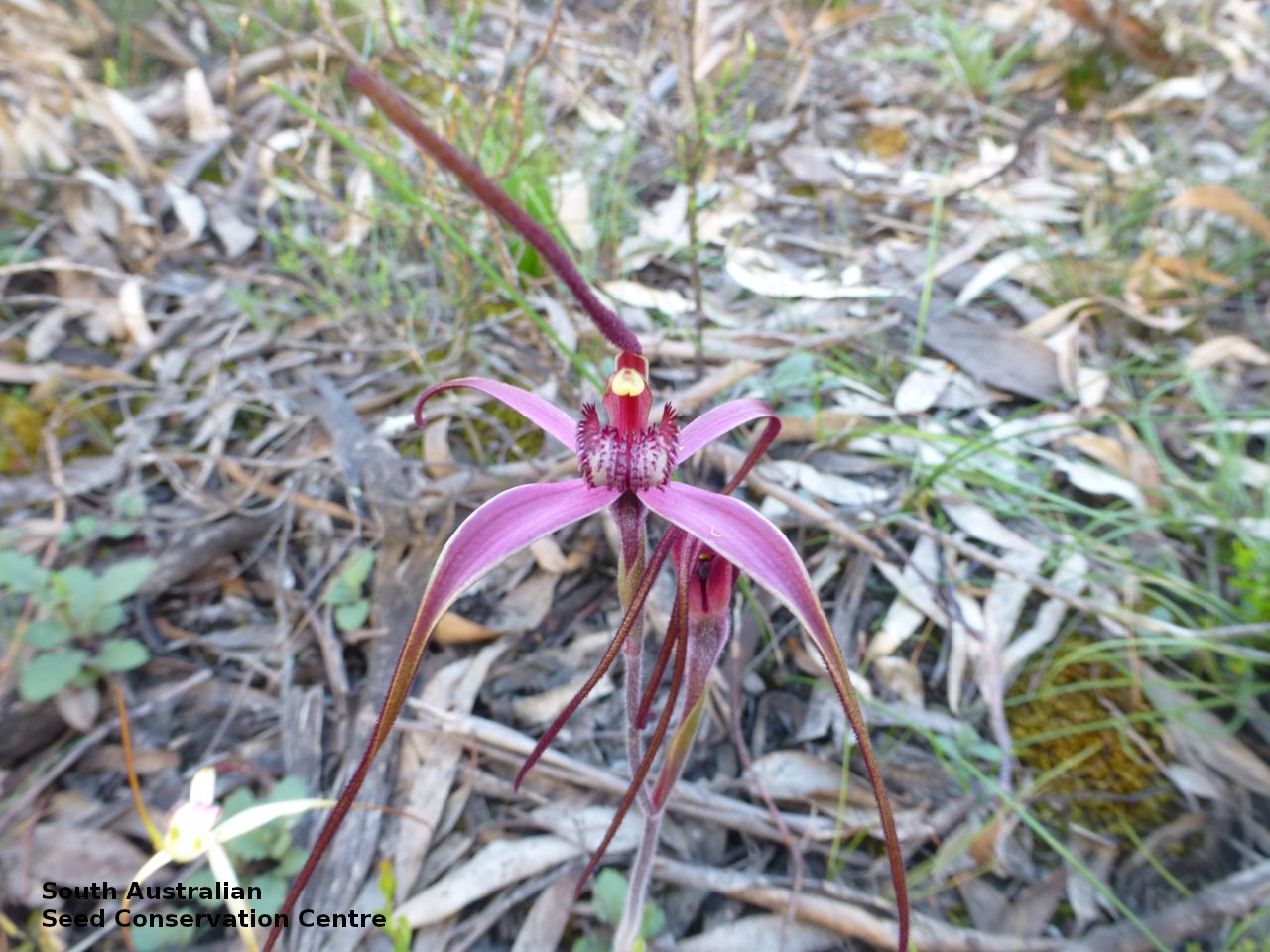
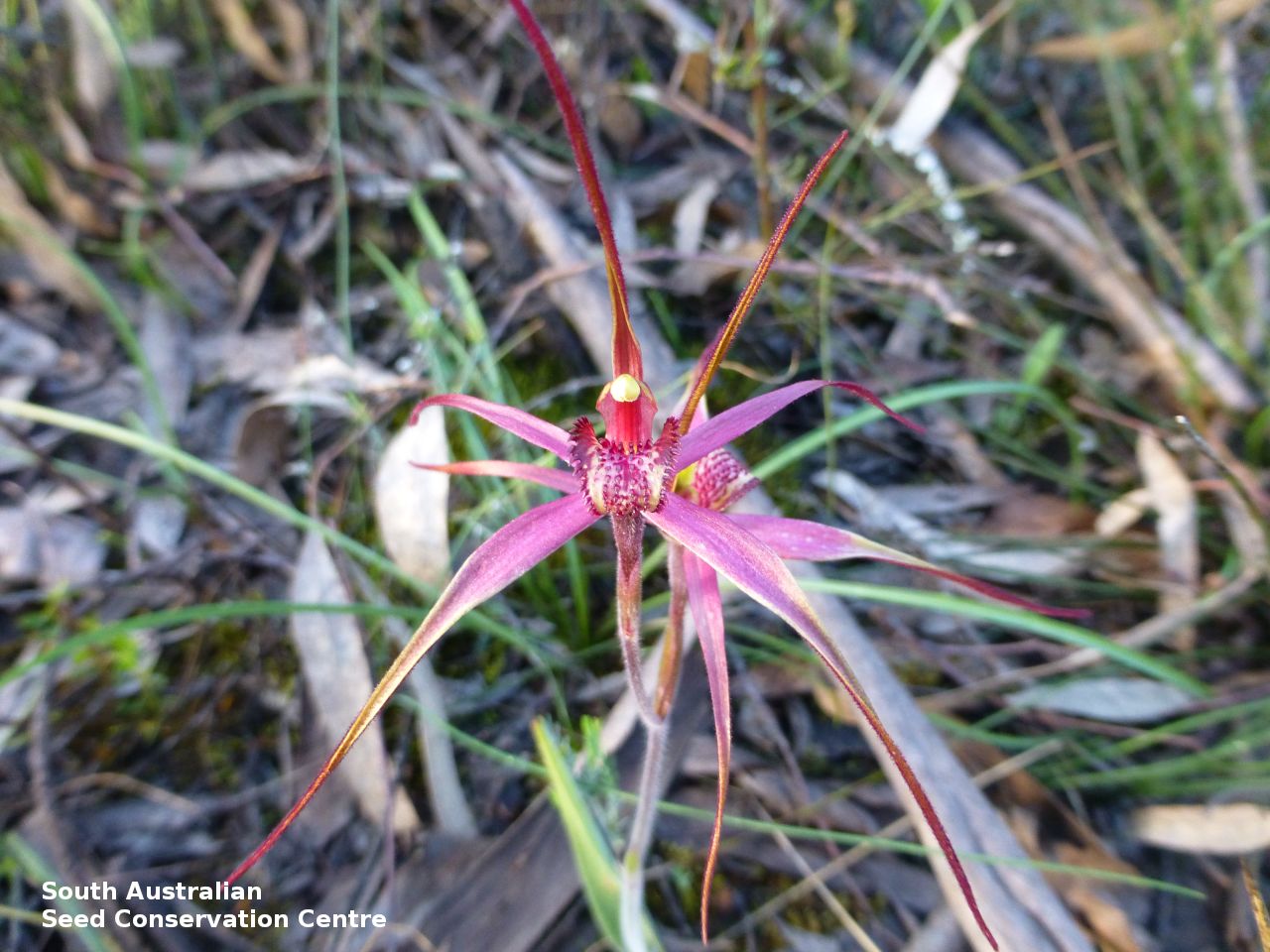
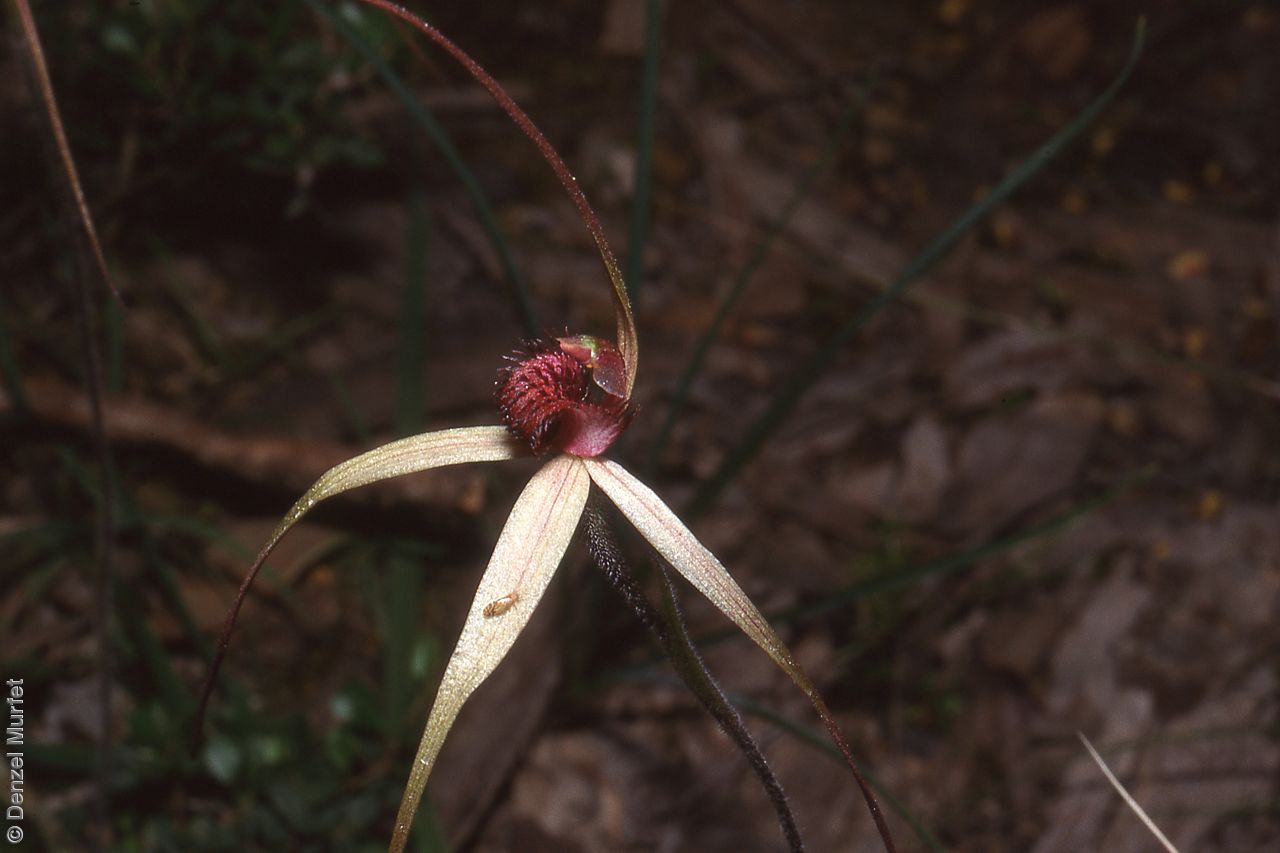
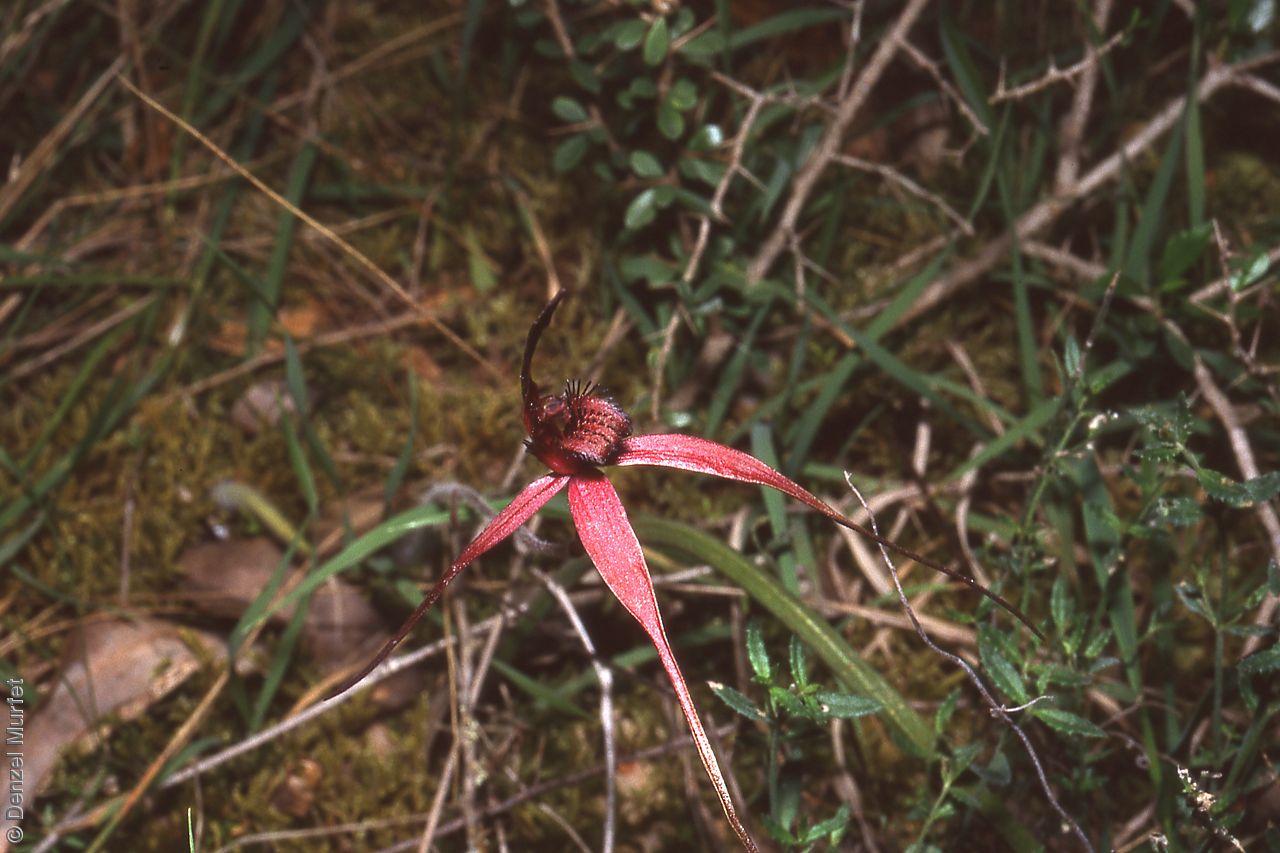
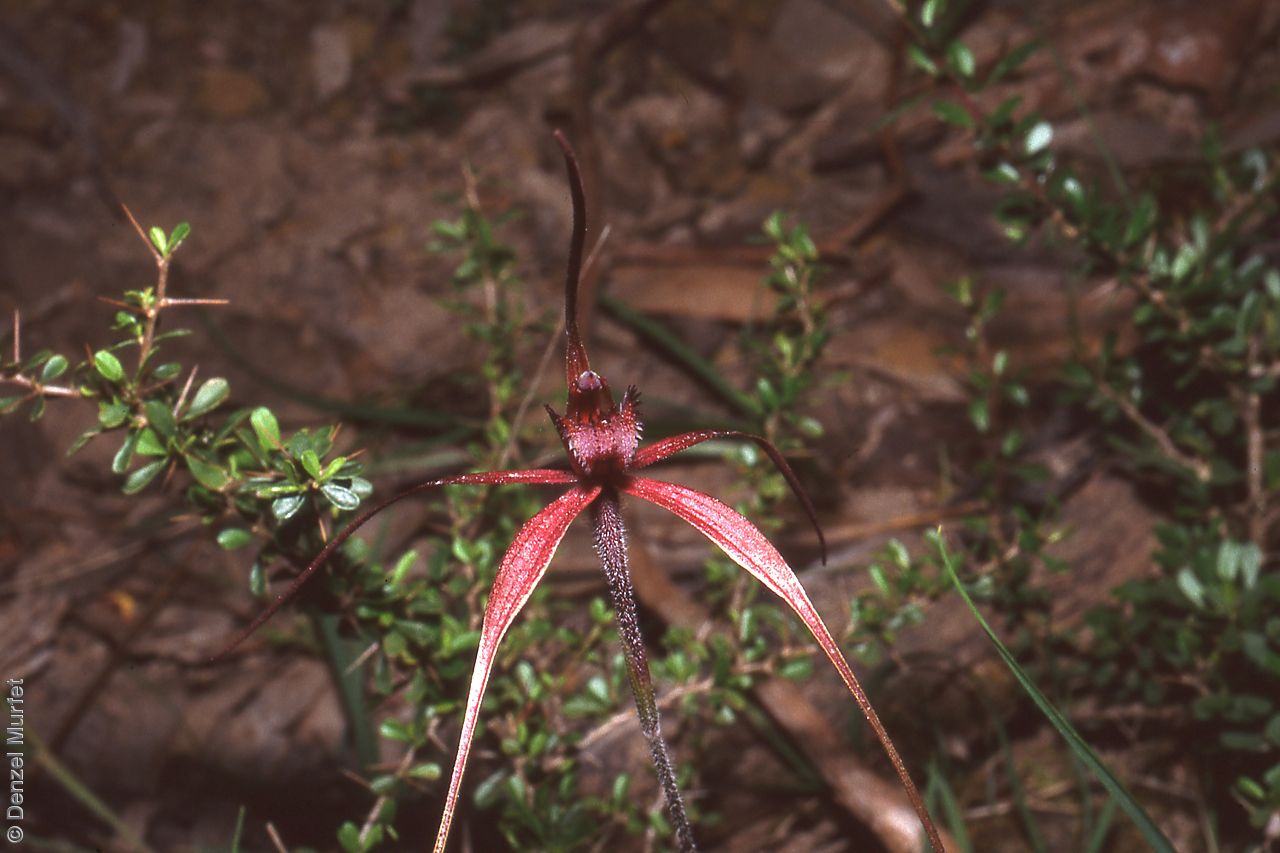
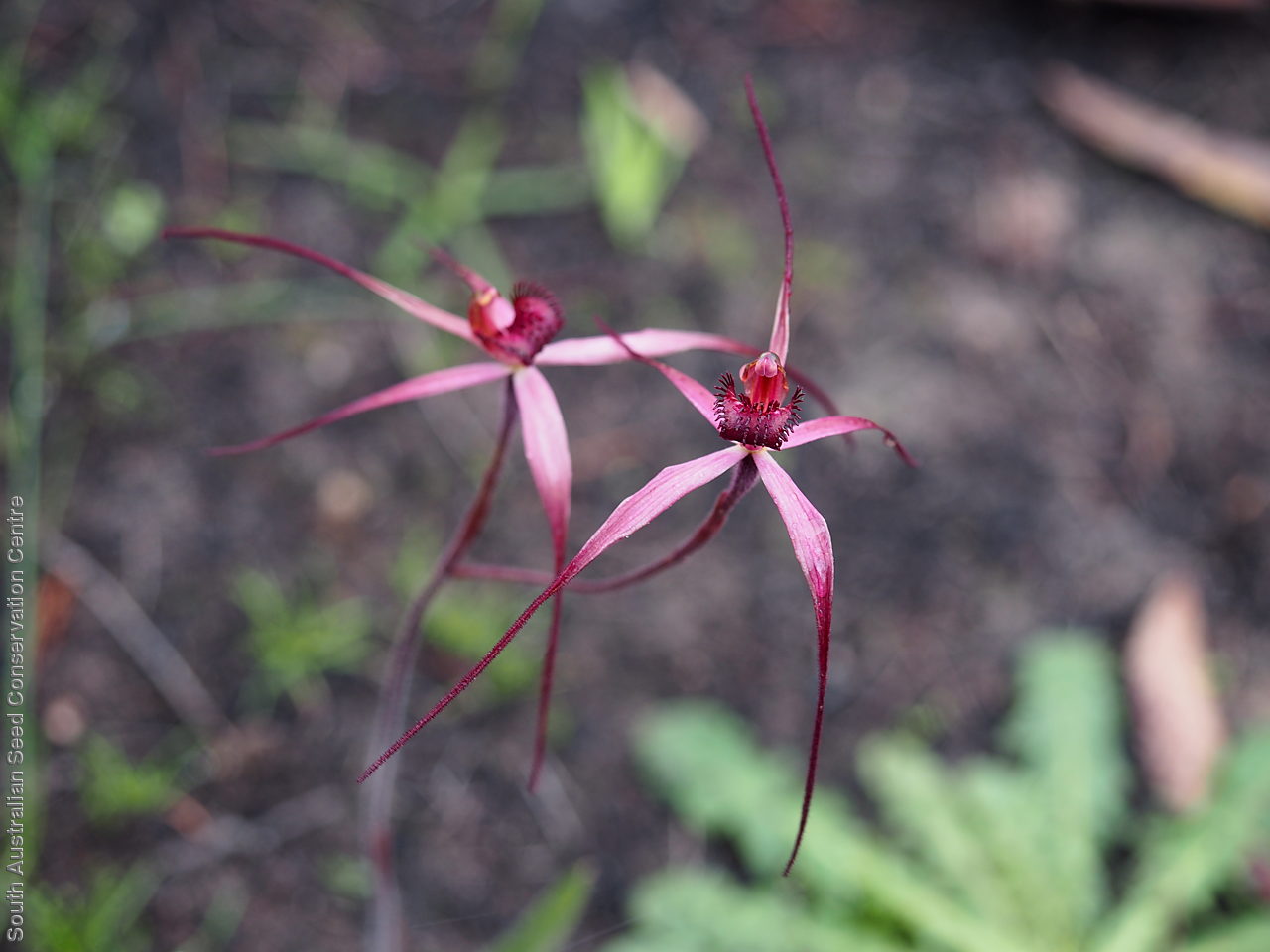
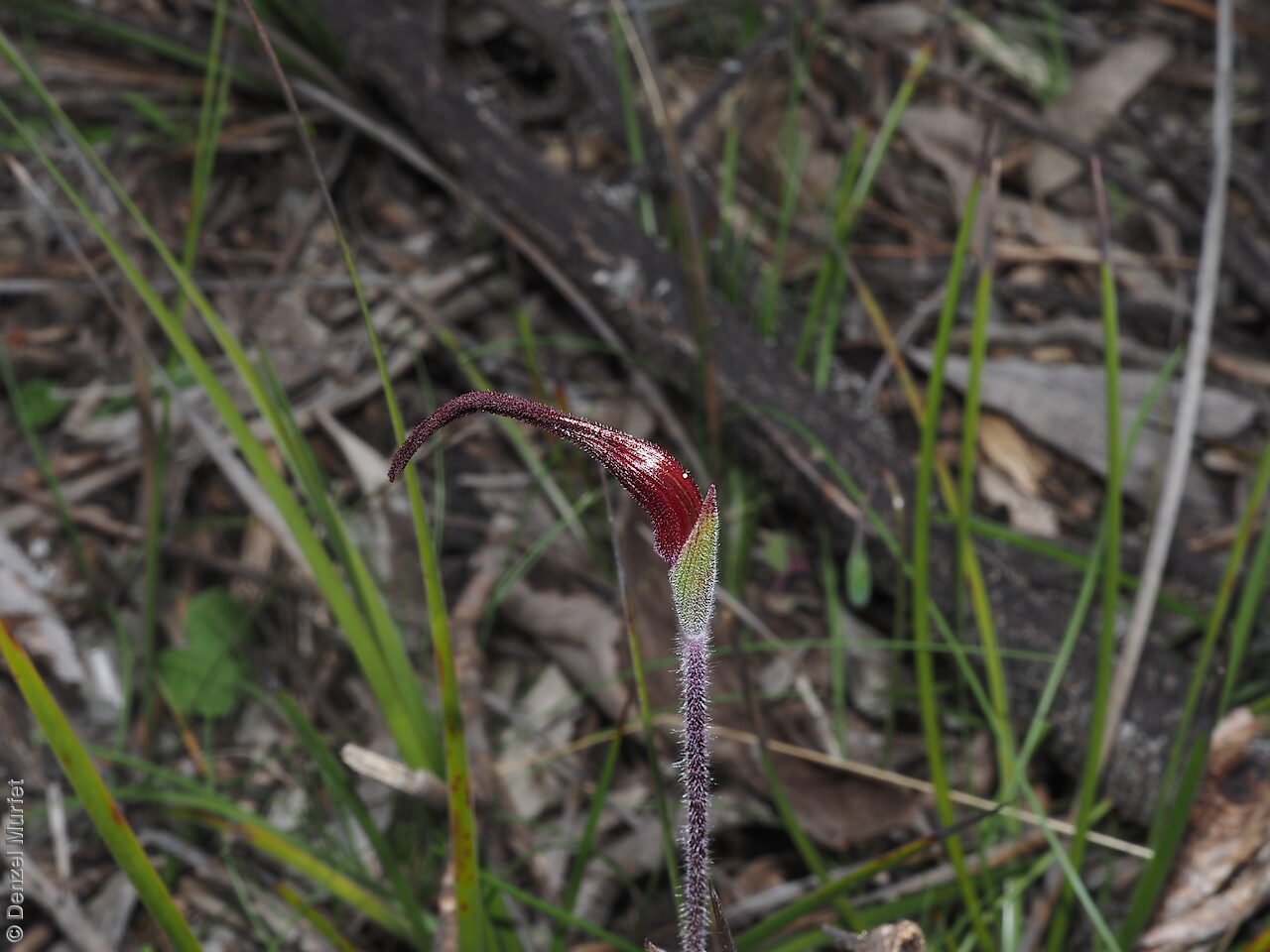
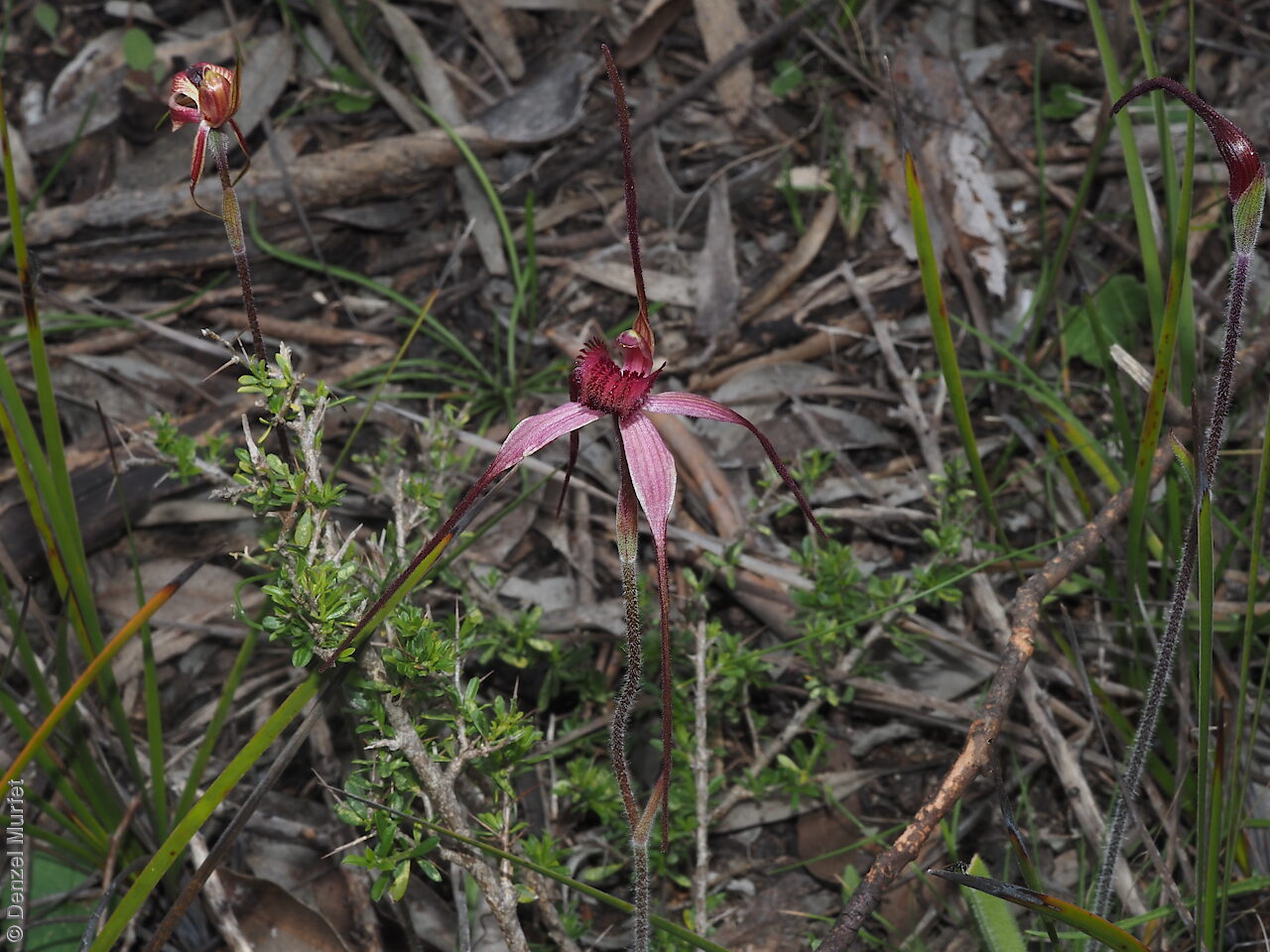
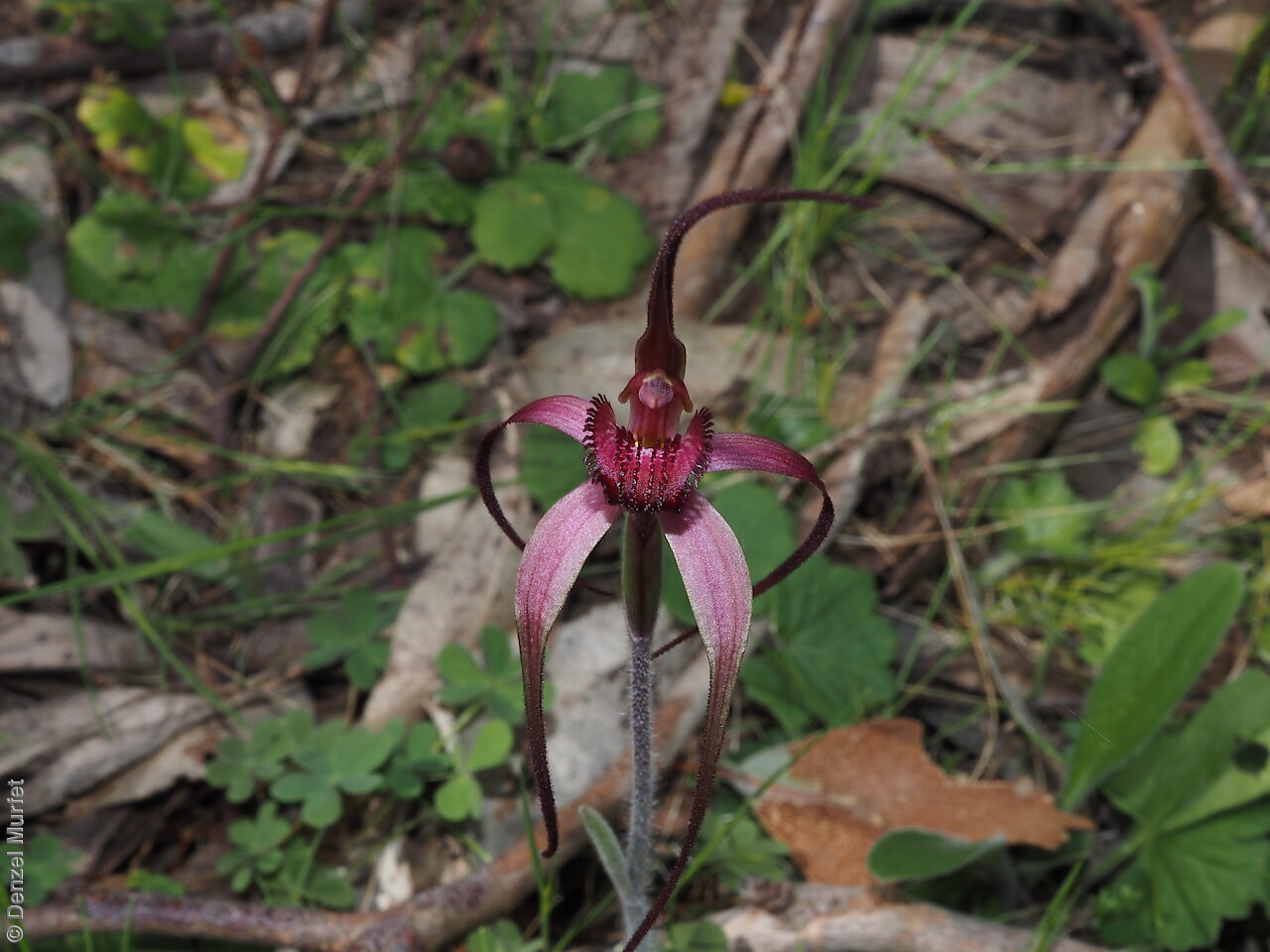
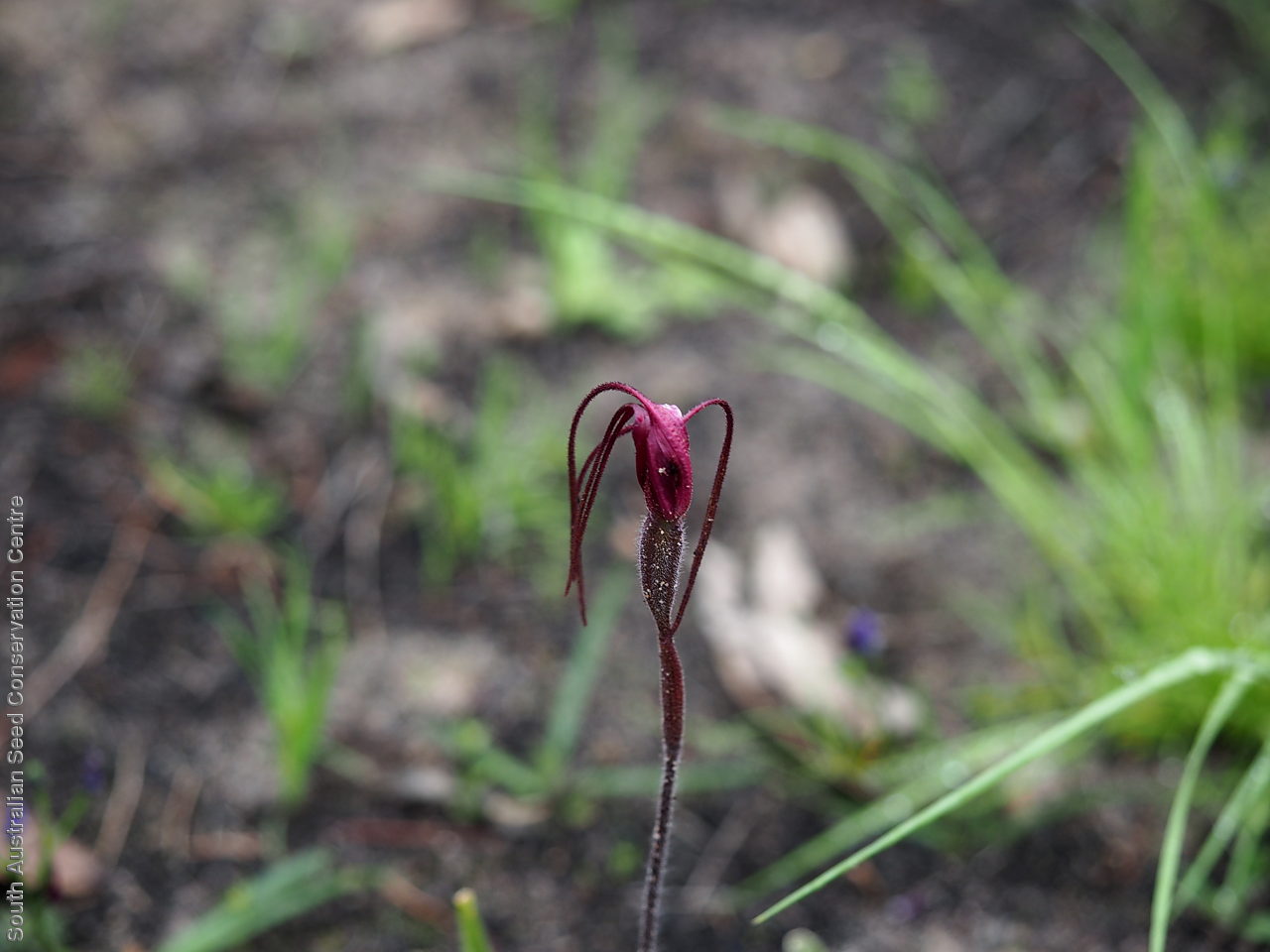
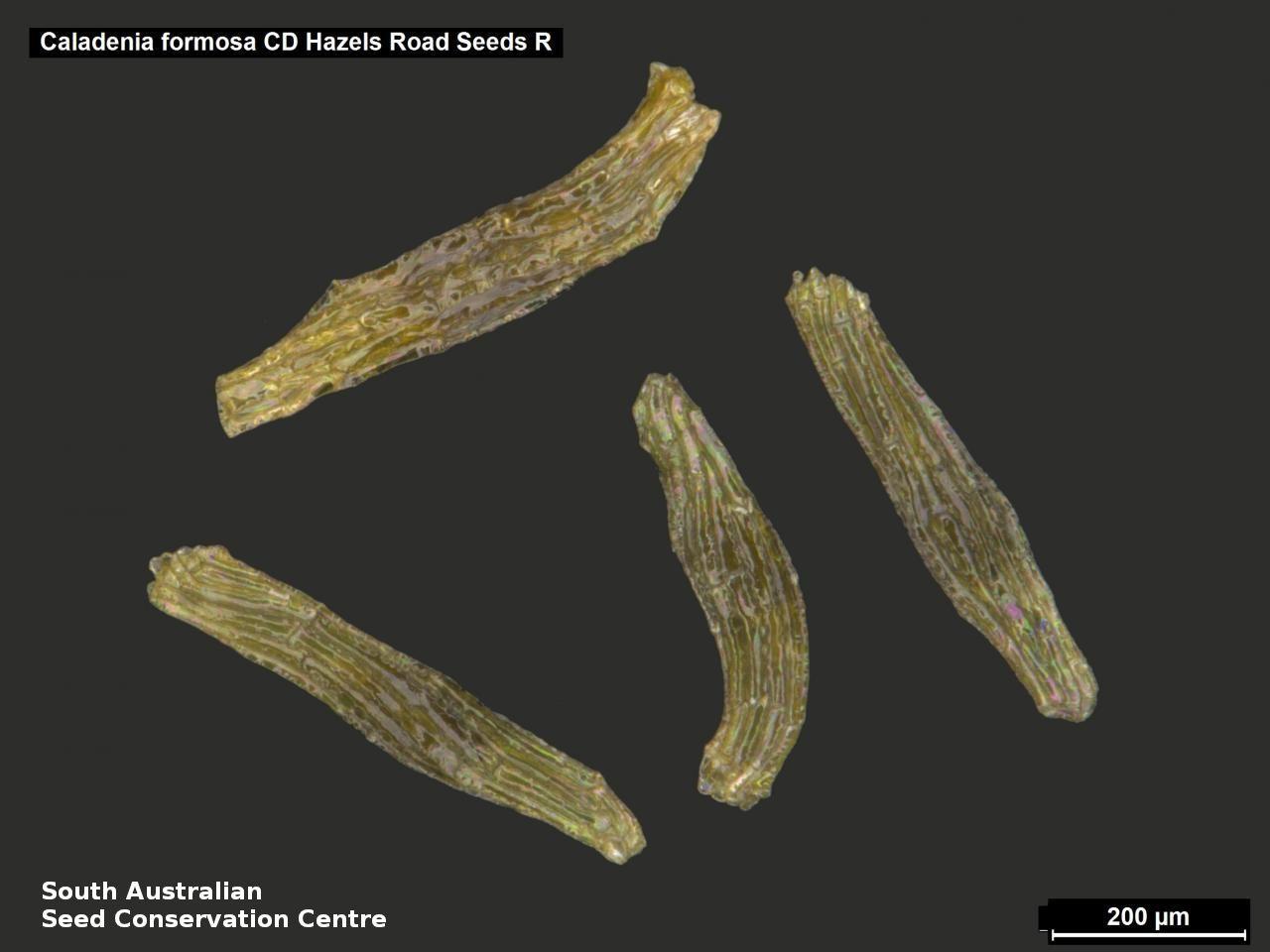
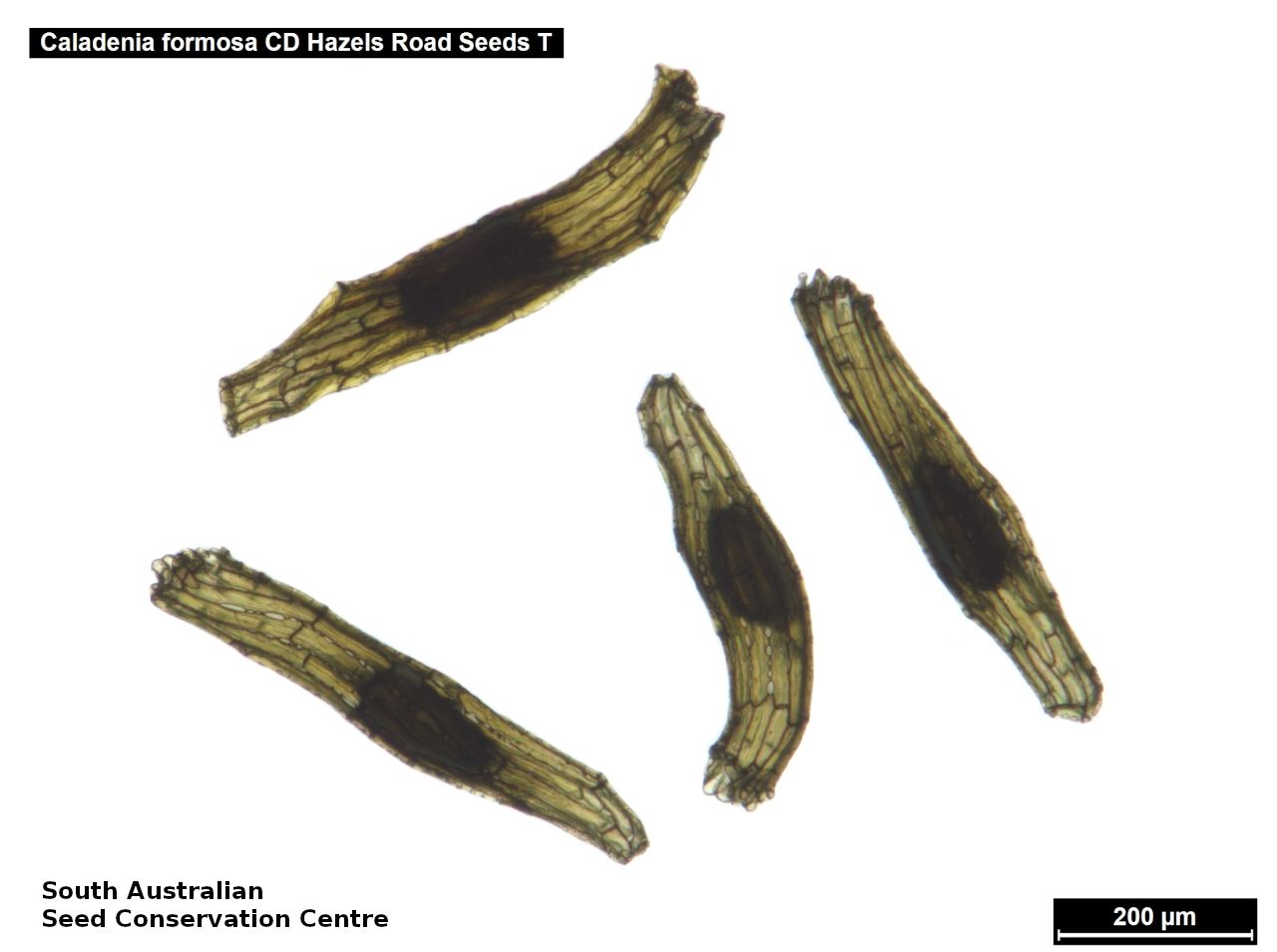


Botanical art
Prior names
Calonema haemanthum
Calonemorchis haemantha
Arachnorchis formosa
Caladenia haemantha
Caladenia patersonii, partly
Etymology
Caladenia from the Greek 'callos' meaning beauty and 'aden' meaning a gland, referring to the colourful labellum and the glistening glands at the base of the column that adorn many of the species. Formosa from the Latin 'formosa' meaning beautiful, alluding to the attractive flowers.
Distribution and status
Found in the South-east in South Australia, growing in heathy woodlands in shallow sands, typically in areas that are moist in winter and dry in summer. Also found in Victoria. Native. Rare in South Australia. Very rare in Victoria. Vulnerable in Australia under the EPBC Act.
Herbarium region: South Eastern
NRM region: South East
AVH map: SA distribution map (external link)
Plant description
Annual terrestrial orchid growing from an underground tuber to 50 cm tall with up to three flowers and a single hairy linear leaf to 15 cm long. Flowers are large, with sepals up to 80 mm in length. Colour can vary from pinkish-red to deep blood-red, but is generally uniform. Flowering between September and October. Fruits are brown papery ellipsoid capsule. Seeds are very small brown ellipsoid seed with a long cylindrical translucent brown mesh-like covering.
Seed collection and propagation
Collect seeds between December and January. Collect fat capsules as they start to dry and turn brown. Pods will split and release the seeds quickly and will require monitoring. To increase the chances of collecting mature pods, it is recommended that a small breathable bag (ie. Organza bags) be used to enclose the developing capsules. Place the capsules in a container that will hold fine seeds and leave to dry for a few weeks or until the capsule split. Then carefully hold the capsule and tap it gently to release the seeds. Store the seeds with a desiccant such as dried silica beads or dry rice, in an air tight container in a cool and dry place, refrigerator or in liquid nitrogen. For the NVC South East Orchid Project two populations consisting of more than 50 individuals in total were recorded in the Geegeela & Binnum areas. Approximately 1,235,000 seeds (0.38 g) were banked from these two populations. Seed viability was low (19%) for the Geegeela collection and ranged between 72% and 93% for the Binnum collection. Seed germination in Caladenia species is difficult without compatible mycorrhizal fungi.
| Location | No. of seeds (weight grams) | Number of plants | Date collected | Collection number Collection location | Date stored | % Viability | Storage temperature |
|---|---|---|---|---|---|---|---|
| 30-Nov-2004 | Anna? South Eastern | 1-Nov-2016 | N/C | -80°C | |||
| BGA | 380,000 (0.118 g) | 23 | 4-Jul-2005 | C. Dickson South Eastern | 1-Nov-2016 | 77% | -80°C |
| 2 pods | 22-Nov-2005 | M. Worley South Eastern | 1-Nov-2016 | N/C | -80°C | ||
| BGA | 700,000 (0.213 g) | 11 pods | C. Dickson South Eastern | 1-Nov-2016 | 93% | -80°C | |
| BGA | 150,000 (0.045 g) | 4 | 4-Jul-2005 | C. Dickson South Eastern | 1-Nov-2016 | 72% | -80°C |
| BGA | 6,000 (0.002 g) | 7 | 16-Oct-2013 | DJD2780 South Eastern | 1-Nov-2016 | 19% | -80°C |
| 30-Nov-2004 | Anna? South Eastern | 1-Nov-2016 | N/C | -80°C | |||
| BGA | 77,900 (0.028 g) | 2 | 22-Nov-2018 | DJD3851 South Eastern | 24-Apr-2019 | N/C | -18°C |
Number of plants: This is the number of plants from which the seeds were collected.
Collection location: The Herbarium of South Australia's region name.
% Viability: Percentage of filled healthy seeds determined by a cut test or x-ray.